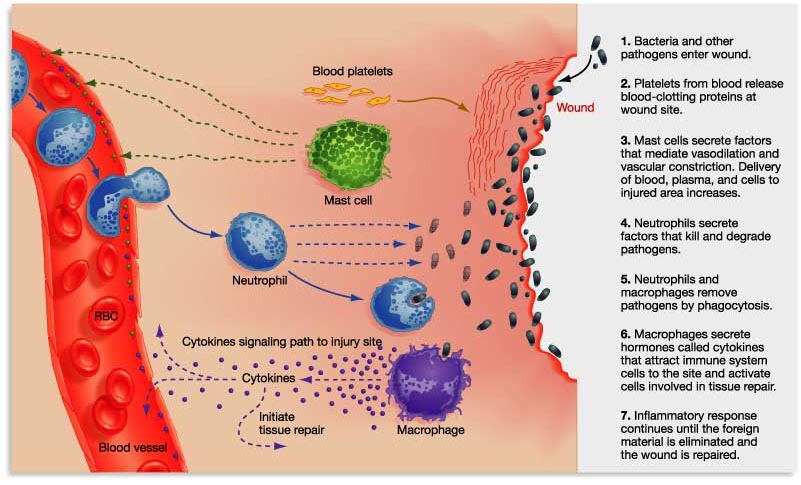Causes Of Chronic Pain
Chronic pain may originate with an initial trauma/injury or infection (e.g. shingles), or there may be an ongoing cause of pain (such as overuse injuries; and degenerative diseases, like osteoarthritis).
Inflammation is tied up with chronic pain whether the pain comes from another disease (e.g. cancer), whether it comes from mechanical stress (e.g. poor posture, abnormal bone structure, back pain from sitting all day, “runner’s knee”), or whether it comes from less obvious identifiable causes (e.g. poor diet, stress, autoimmune diseases). Chronic pain without a visible cause is one of the most mentally chronic health problems to manage, because many people assume that you’re just making it up for attention (especially if you “look healthy”).
Inflammation is the body’s response to harm (trauma, pathogens, etc) by sending immune cells and antimicrobial proteins to the rescue to either rebuild stressed and damaged tissues or fight the threat. This reaction mediates both acute and chronic pain through release of cytokines.
THE ROLE OF INFLAMMATION DURING WOUND HEALING

Neuropathic pain can also occur, even after the original physical damage is long gone or when there is no physical stimulus that should be painful. Something goes wrong in the nervous system, and the nerves keep sending the brain the sensation of pain anyway.
Multiple sclerosis is a good example of a disease that can cause neuropathy; so can diabetes, cancer, and several others.
